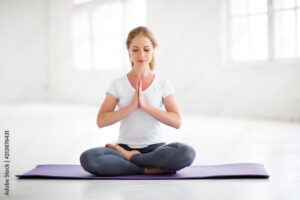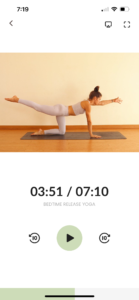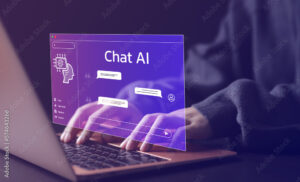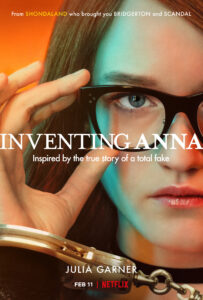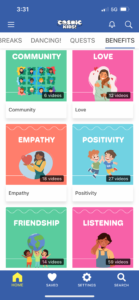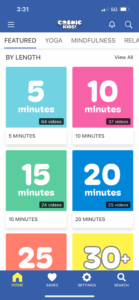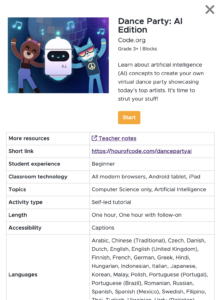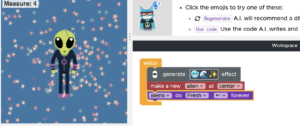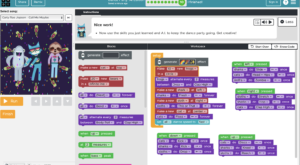Check out the recorded slides of my Summary of Learning from the course EDTC 300. I thoroughly enjoyed this course and getting to learn about so many tech tools that I can implement into my practice and my teaching. The topics of this course have given me time to reflect and ponder how I can use tech and teach about the digital world, digital citizenship, digital identity, and digital literacy to my students in my classroom.
Text version of my video below:
- Technology in my life
- To begin a class all about technology and how we use tech in education, what better way than to take a look in how we use tech in our own lives? When I took a look at how I use tech in my daily life I found that I use my phone way more than I thought I did. My overall daily average seems to lie somewhere around 4.5 hours. I spend lots of time messaging, taking pictures, and using social media platforms like instagram, Facebook and tiktok. I currently teach primary students but if I taught students in middle years or high school, it would be interesting to see what screen time looks like for kids of those ages in comparison to me.
- Digital world
- As we live in a digital world, teachers need to be embedding tech into our lessons. Not only does it spark the interest of our students, but tech is something that is ever changing and never disappearing. Our students are going to be better at using tech than we will ever be, since they are truly growing up in a world where everything we need to know is at our finger tips. Even refrigerators have screens now! In my blog post, I posed the question of how we as teachers can stay on top of teaching with tech when there are limited resources with a large amount of students in our classrooms? I think as our world changes and one day paper may become obsolete, there needs to be enough tech for all students to interact with. It is important for students to learn that the digital world is massive, and you can reach audiences from all over the globe at the press of the button. Later we will dive into what it means to be a good citizen online and how to be aware, critical and safe in our ever growing digital world.
- SAMR model
- Our instructor Katia introduced us to the SAMR model which is all about how we use tech to enhance our lessons in the classroom. S stands for Subsitution, A for Augmentation, M for Modification, and R for Redefinition. After exploring the SAMR model, I learned that it is a way for us as educators to think of how we can challenge our students to use higher order thinking when it comes to technology. Instead of using tech for only simple things like having a computer replace a paper copy of a text book, how can we make our lessons interactive with the use of tech in the classroom? Following the SAMR model, teachers can allow students to use creativity when it comes to expressing what they know using a variety of tech tools. An example I used in my blog post was having students create a tiktok to share what they learned regarding an assignment. With the endless amount of templates and popular trends on tiktok, students can share their knowledge through poems, dancing, acting, video layering and more. Using the SAMR model gives meaning to the way we embed tech into our lessons.
- Digital Citizenship
- Digital citizenship is a new term for me. Knowing that tech is becoming so embedded into our everyday lives, it makes sense that we are citizens to a digital world that is ever changing. In the past I have always learned that we have a digital footprint with everything that we post online. Even though something may be “deleted”, it is never truly gone. For young kids, digital citizenship needs to be learned and understood. Just as we are to be good and responsible citizens within our community, this also includes the digital community. In my blog post, I shared about the 9 Elements of Digital Citizenship. These concepts include digital access, digital commerce, digital communication and collaboration, digital etiquette, digital fluency, digital health and welfare, digital law, digital rights and responsibility, and digital security and privacy. These elements combined show students how to good digital citizens that have awareness, are critical to the content they are receiving, and are respectful. It would be a great guideline for educators to follow when teaching about digital citizenship.
- Cyber safety
- Within Digital citizenship, teachers need to be addressing cyber safety and what it means to stay safe online and being aware of concepts like catfishing and scams. To have the means to be critical about what we read and how we interact online allows us to understand what it means to be safe when using tech online. Not everyone uses the digital world for good things. The “not so good people” are smart with ways to gain information and content that they want from others. It is up to the rest of us to have the skills to detect when something is not right and the online interactions we are having are no longer safe. There were many examples of cyber safety shared in class and within the readings. Are our students able to decipher what is real and what is fake? Are our students aware of privacy settings on social media accounts and how to keep information about our identities hidden? These are important questions to ask ourselves.
- Cyber bullying
- The topic of cyber safety flows into the topic of cyber bullying. Knowing that we all have a digital footprint whenever we post or interact online means that we can easily fall victim to bullying or contribute to bullying. Online, many of us post our beliefs, political standpoints, interests, and information about ourselves. It can also be just as easy to comment and shame other people, as well as share content. There are countless stories on the news about cyber bullying and I am sure we can all think of an instance in our lives regarding cyber bullying. When I was a student I remember hearing the stories such as the effects of cyber bullying on Amanda Todd. As a teacher, it is important to teach students about how cyber bullying is easy to contribute to, but it is just as easy to stand up to or let adults be aware of the situation. Having students know that teachers can be someone who can help if a student is getting bullied online can be a good resource for students.
- Digital literacy
- We then discussed what it means to be digitally literate— having the skills and the critical eye to understand what we see online can be filled with false information, biases, political agendas, and more. The algorithm of what we view on our own news feed on social media platforms is all calculated. Our students are growing up in a world where having strong digital literacy is a required skillset. Since I teach grades one and two, I read through the Saskatchewan curriculum documents to find ELA outcomes that pertained to digital literacy. I suggested that as a class, we could conduct research about a topic using websites online to learn about how to be critical when finding information and always searching more than one source. We could use tools such as google image search or sweet search to assist us in finding quality resources when inquiring about topics.
- Digital identity
- When it comes to digital identity, this is something we need to protect, very much like our actual identities. The neat thing about having a digital identity is that is can be whoever we choose to be. It is not uncommon for one individual to have multiple accounts, sharing different content on each account given the audience that they wish to interact with. Because of the digital world being so large and easily accessible globally, it is very simple to shame or slander people who post what we don’t like to see. This can easily affect the true identity of someone where it impacts their social circles and even their jobs. Again, your digital identity should be protected and you as the sole owner of your digital identity are the person to do so.
- AI
- Speaking of an ever-changing digital world, we now are subjects to a new aspect of technology, artificial intelligence. The use of AI is changing the way we will operate in the classroom. Teachers are able to use AI to develop lesson plans, differentiate texts for varying grade levels, and to assist with potentially grading assignments. Students are able to use AI tools as well. AI can help with research. AI can summarize readings for students, pulling out the main ideas and highlight supporting details. It can even write an essay for you. Students are able to have AI tools check for grammar in written assignments. Although it is important to note that AI cannot solely be relied on, as it doesn’t credit it sources and it can make mistakes. Currently school systems are trying to decipher how to accept AI without having students cheat by using solely AI to complete assignments. Teachers will have to educate students on how to properly use AI as a tool to assist with assignments. It will be interesting in the next few years to see how AI plays out in the education system.
